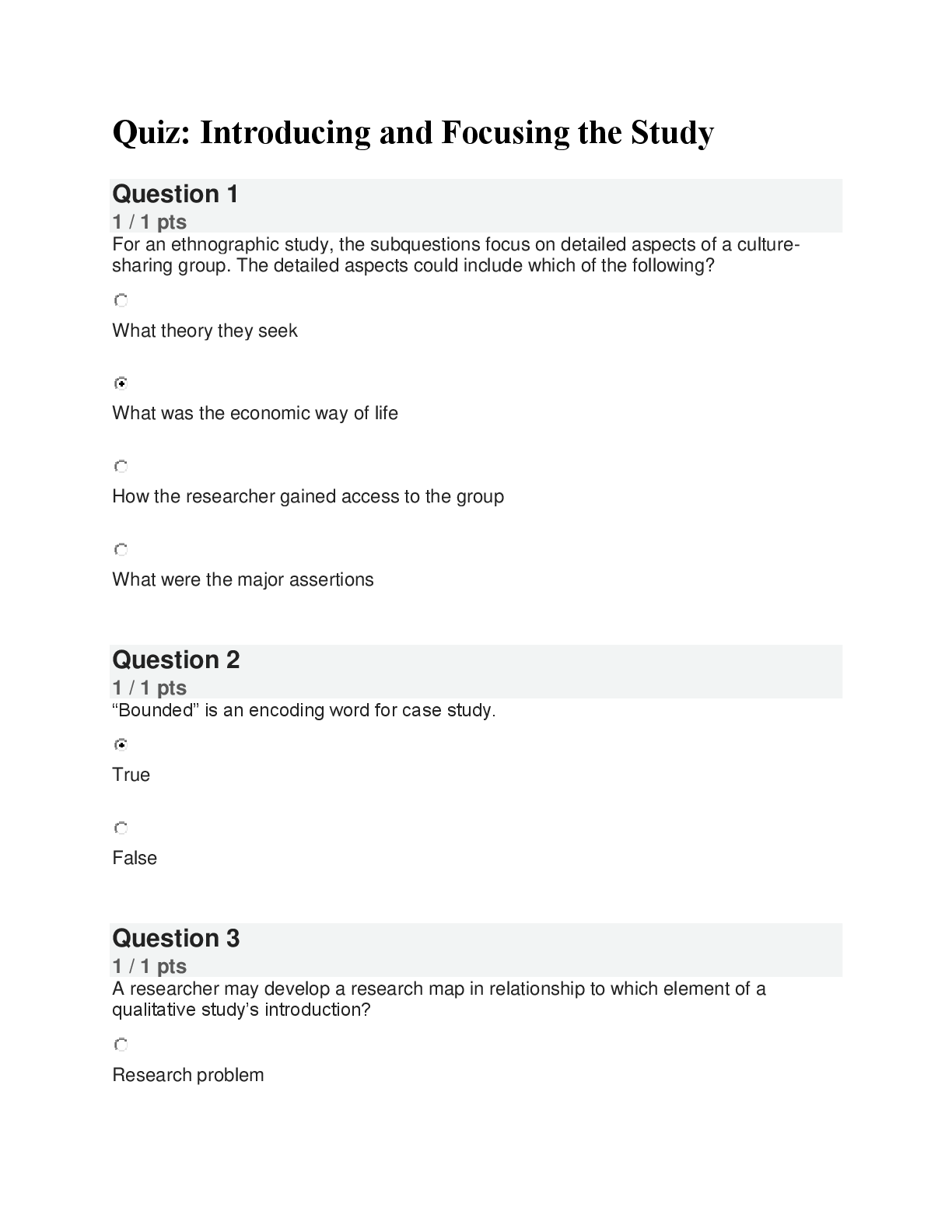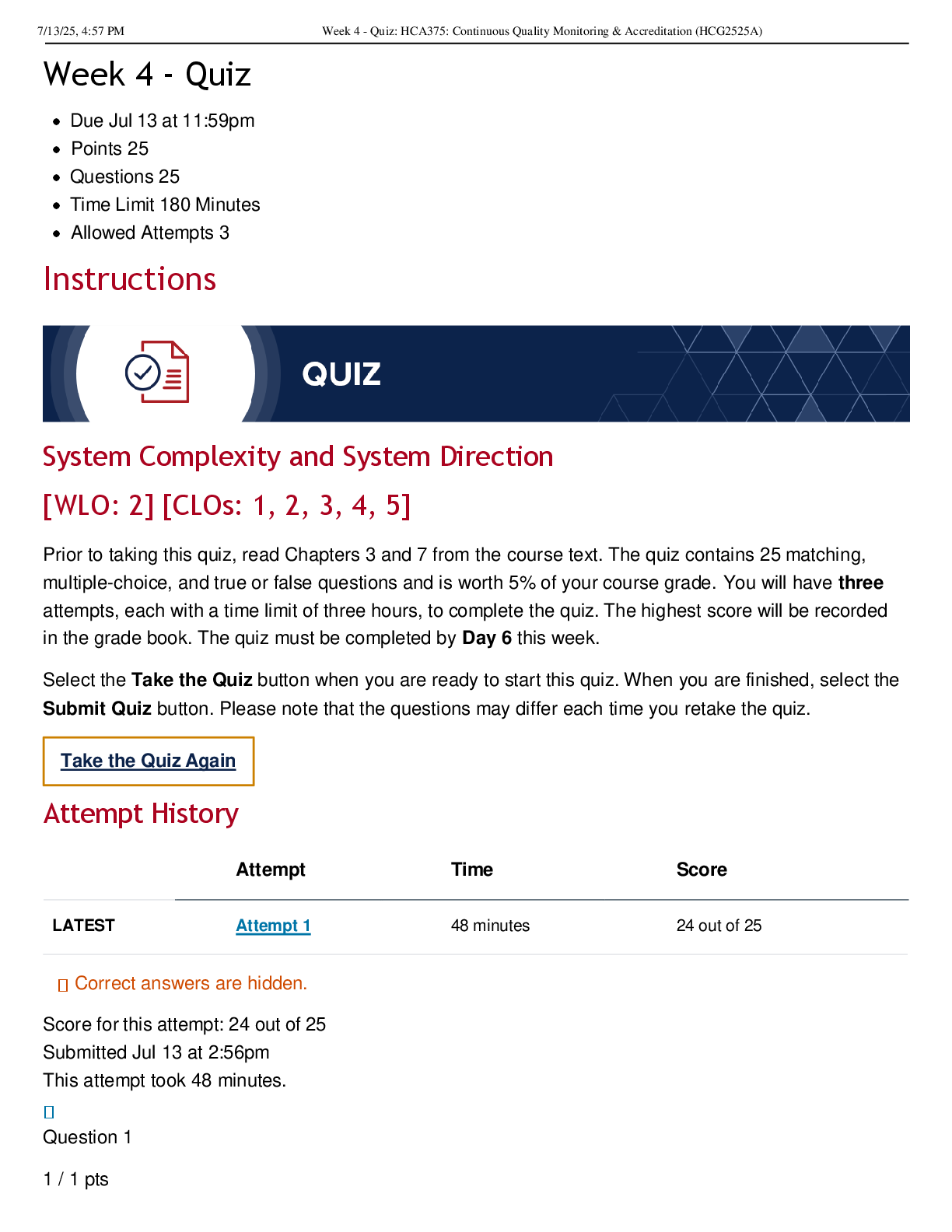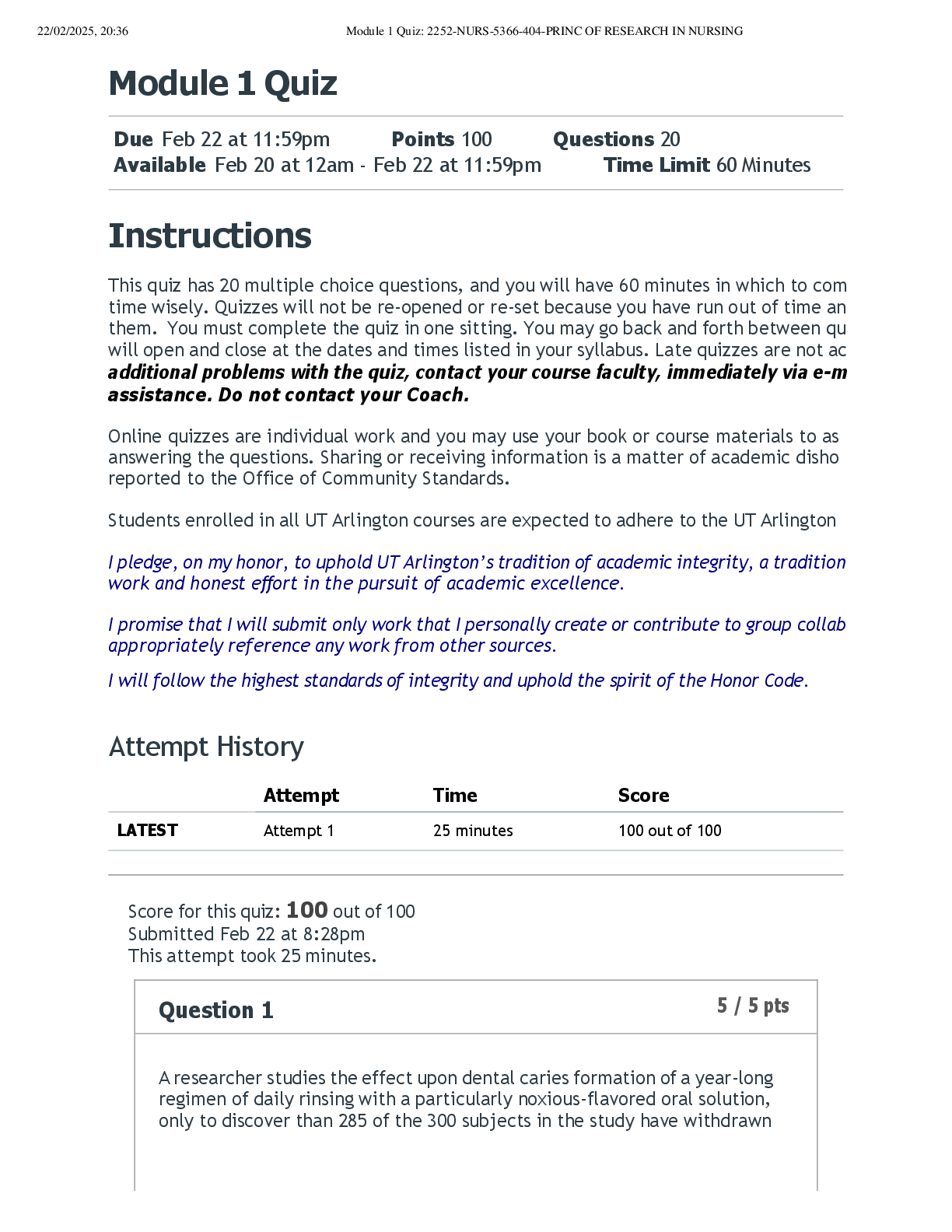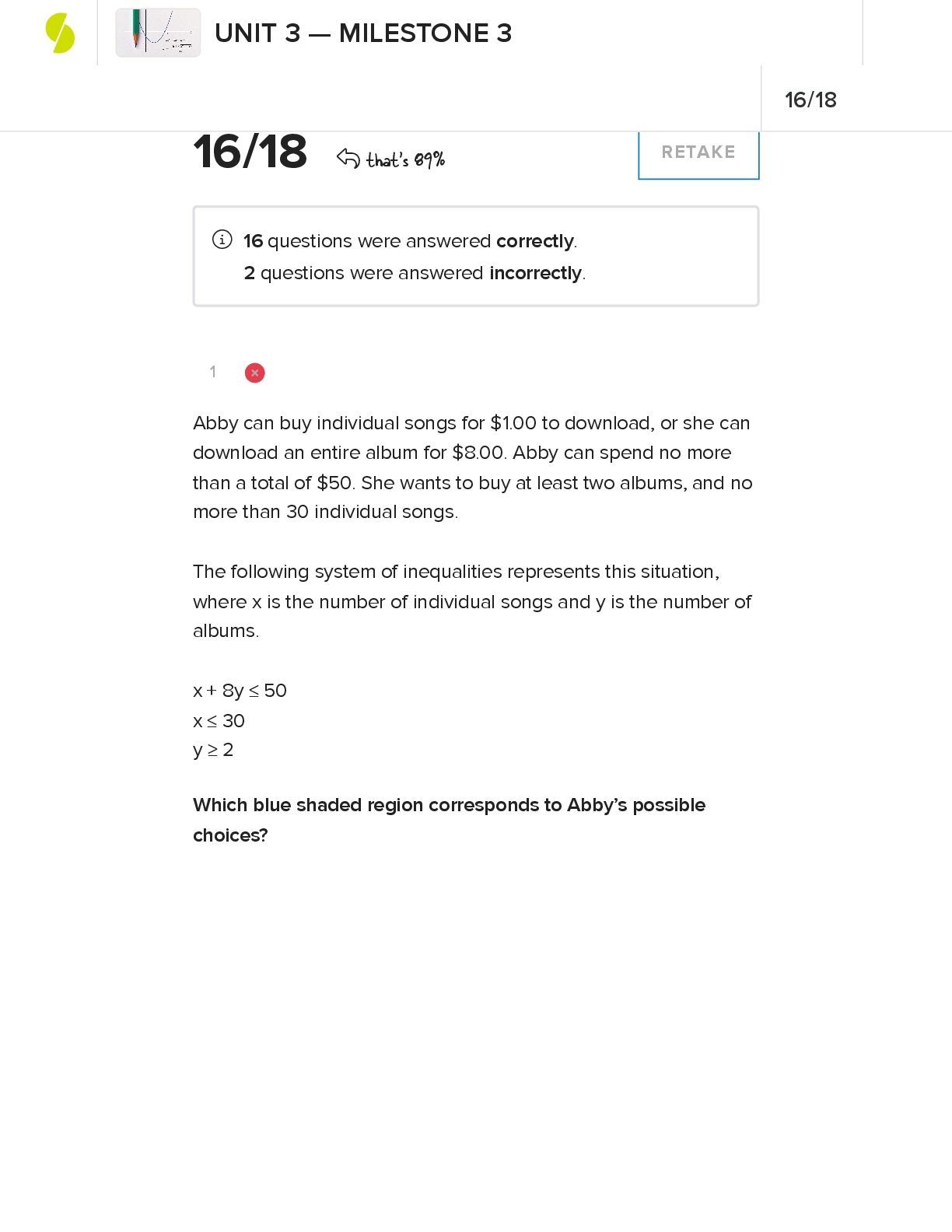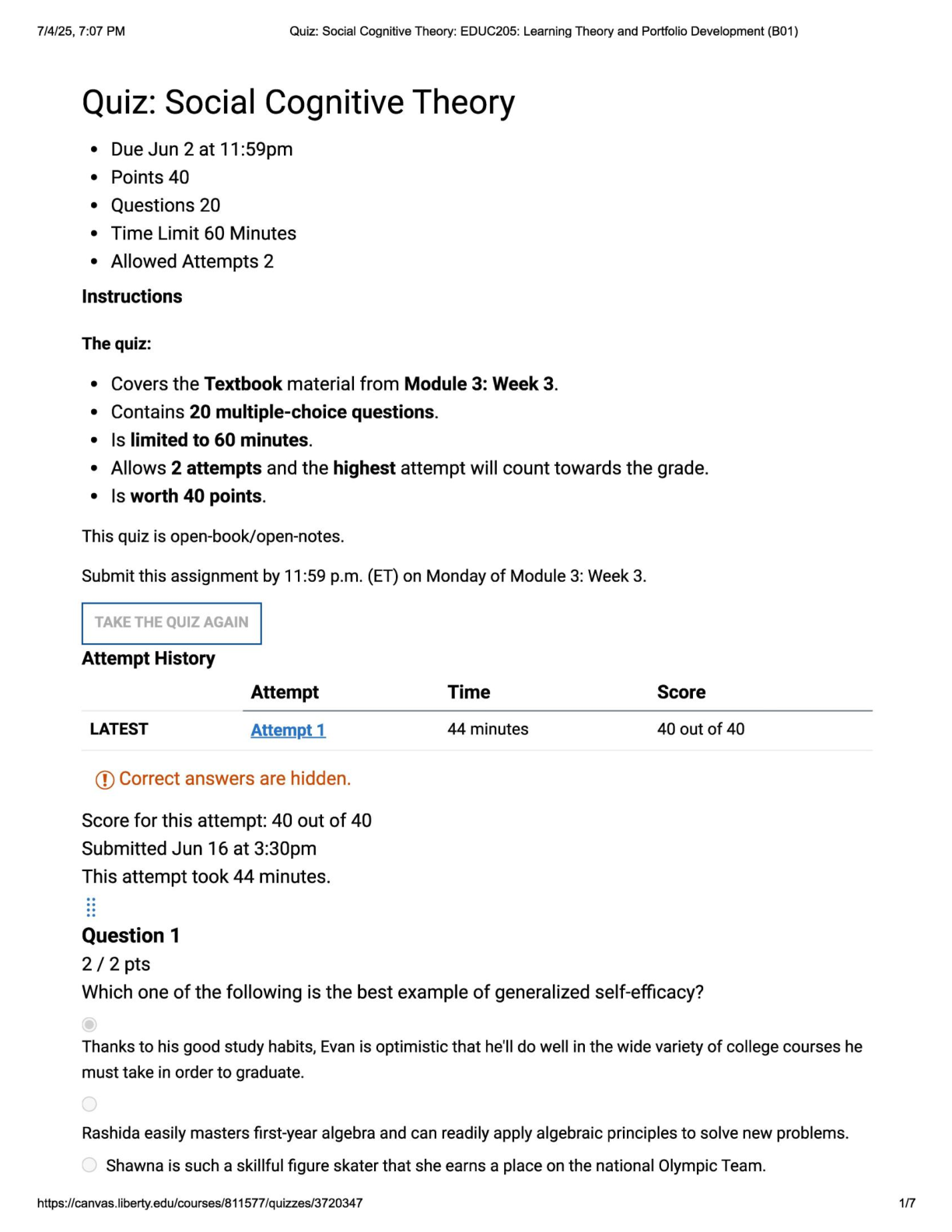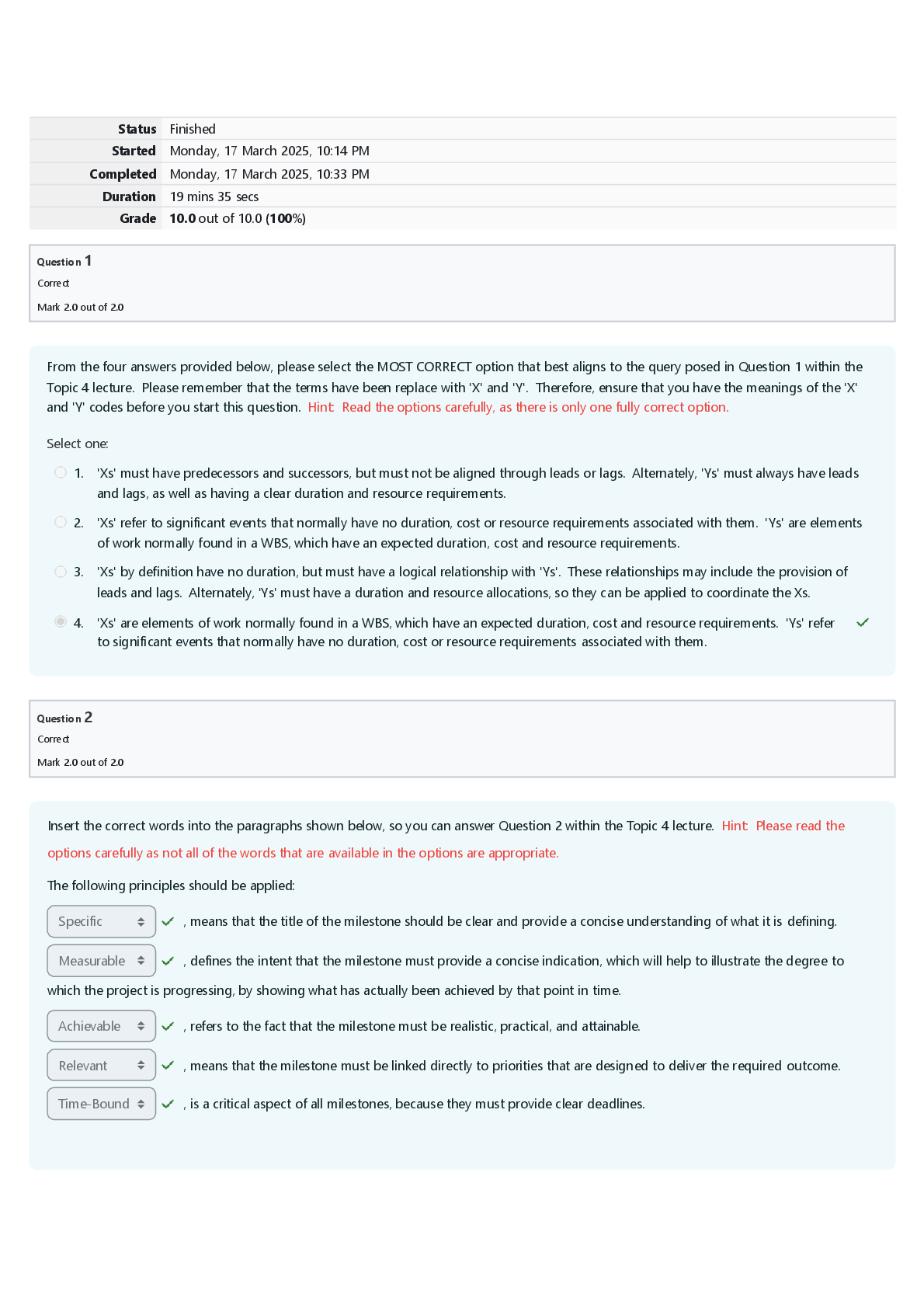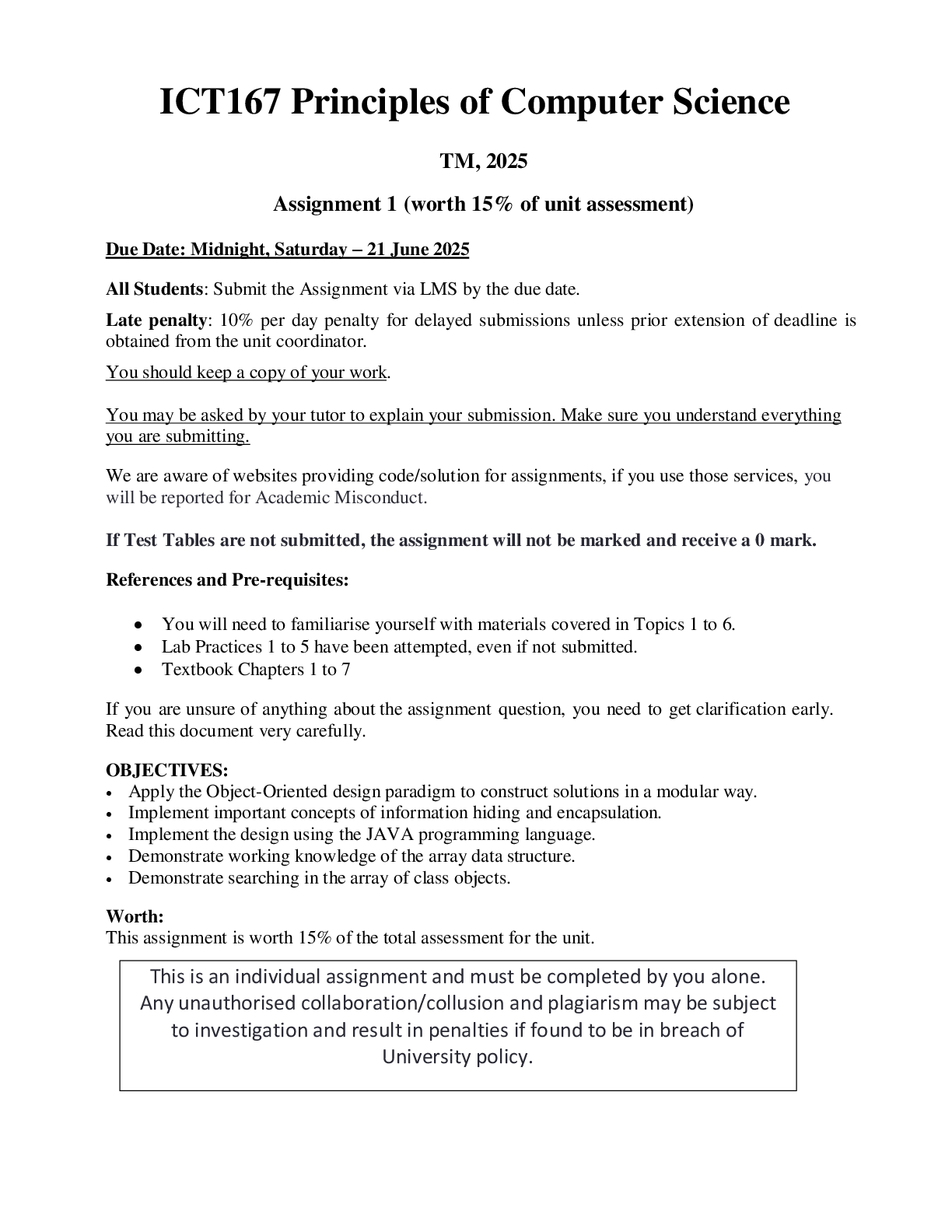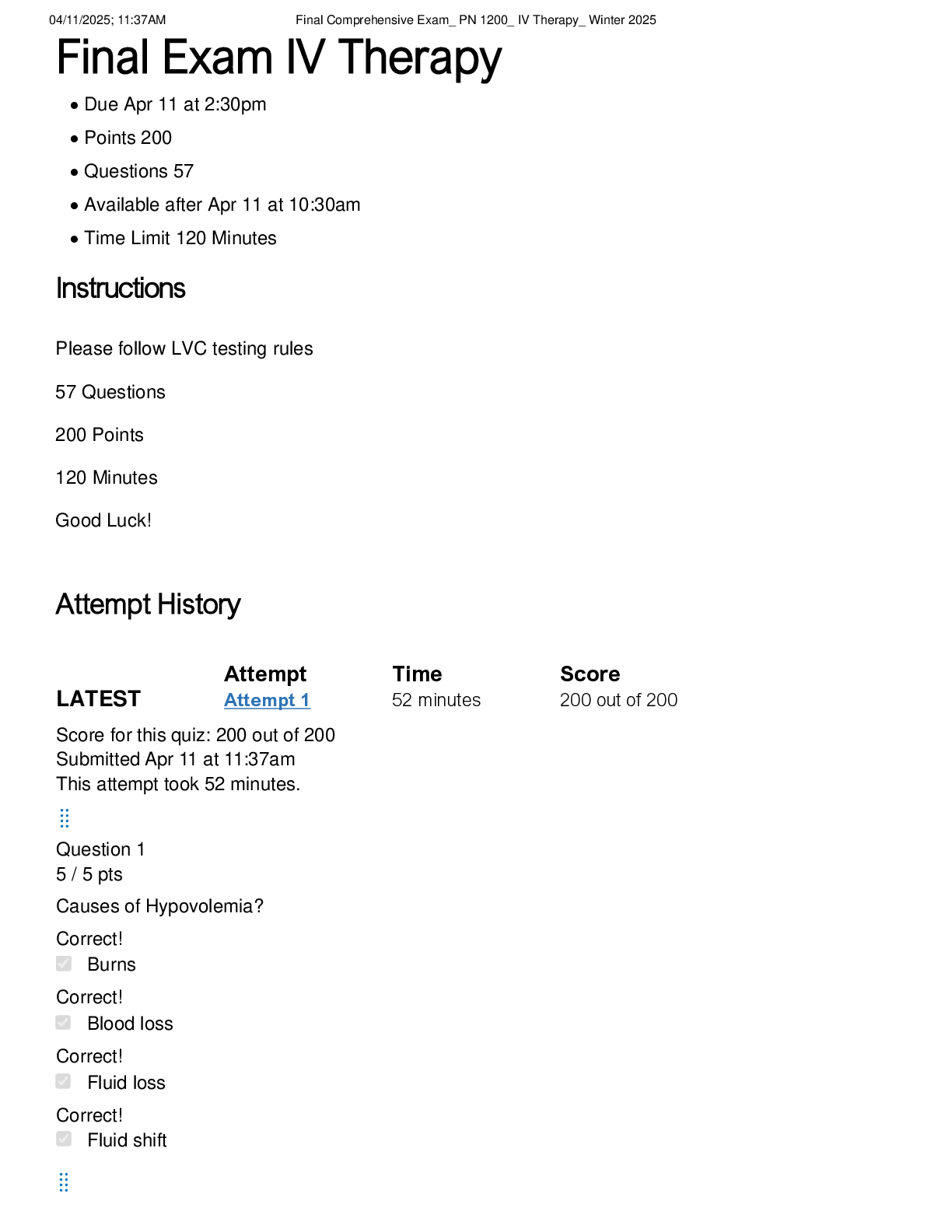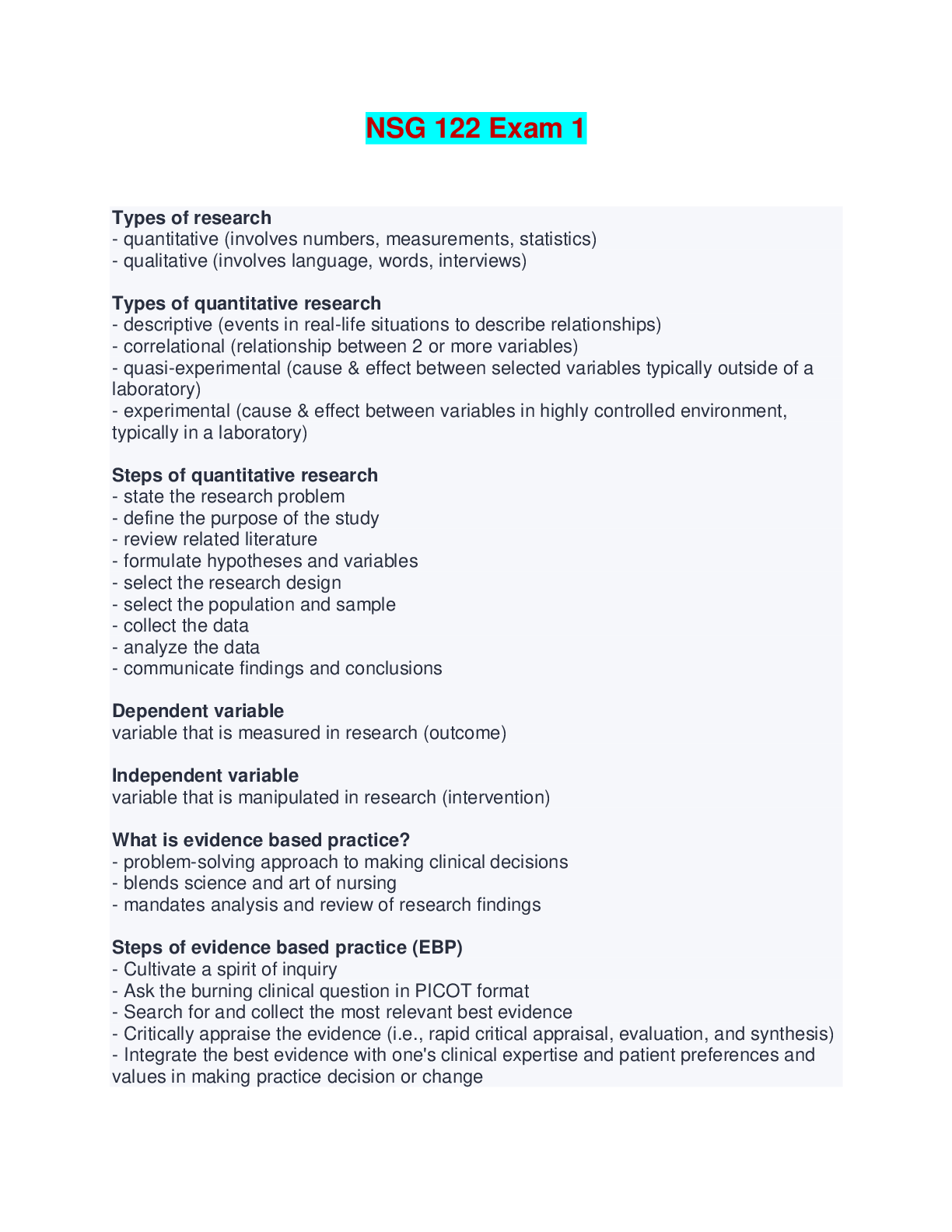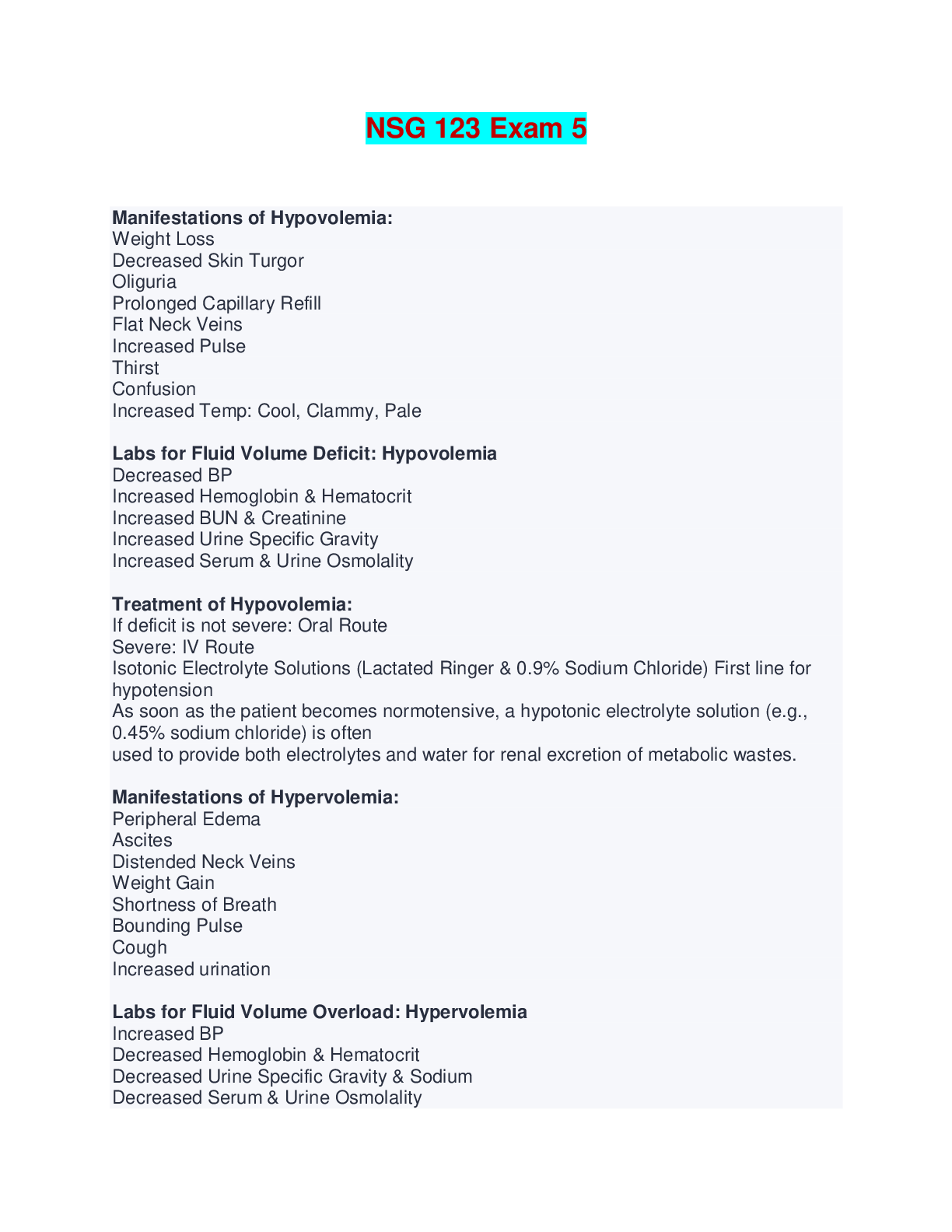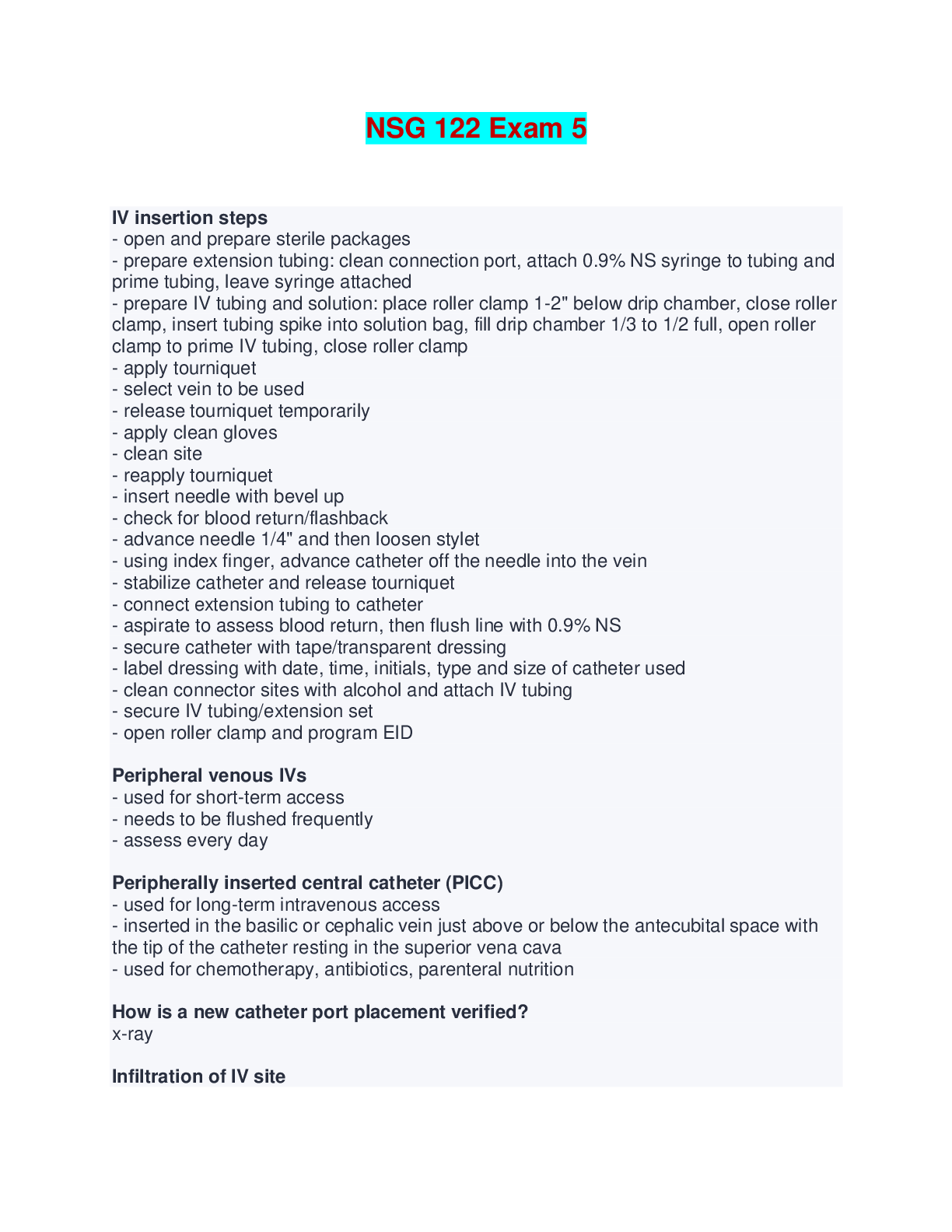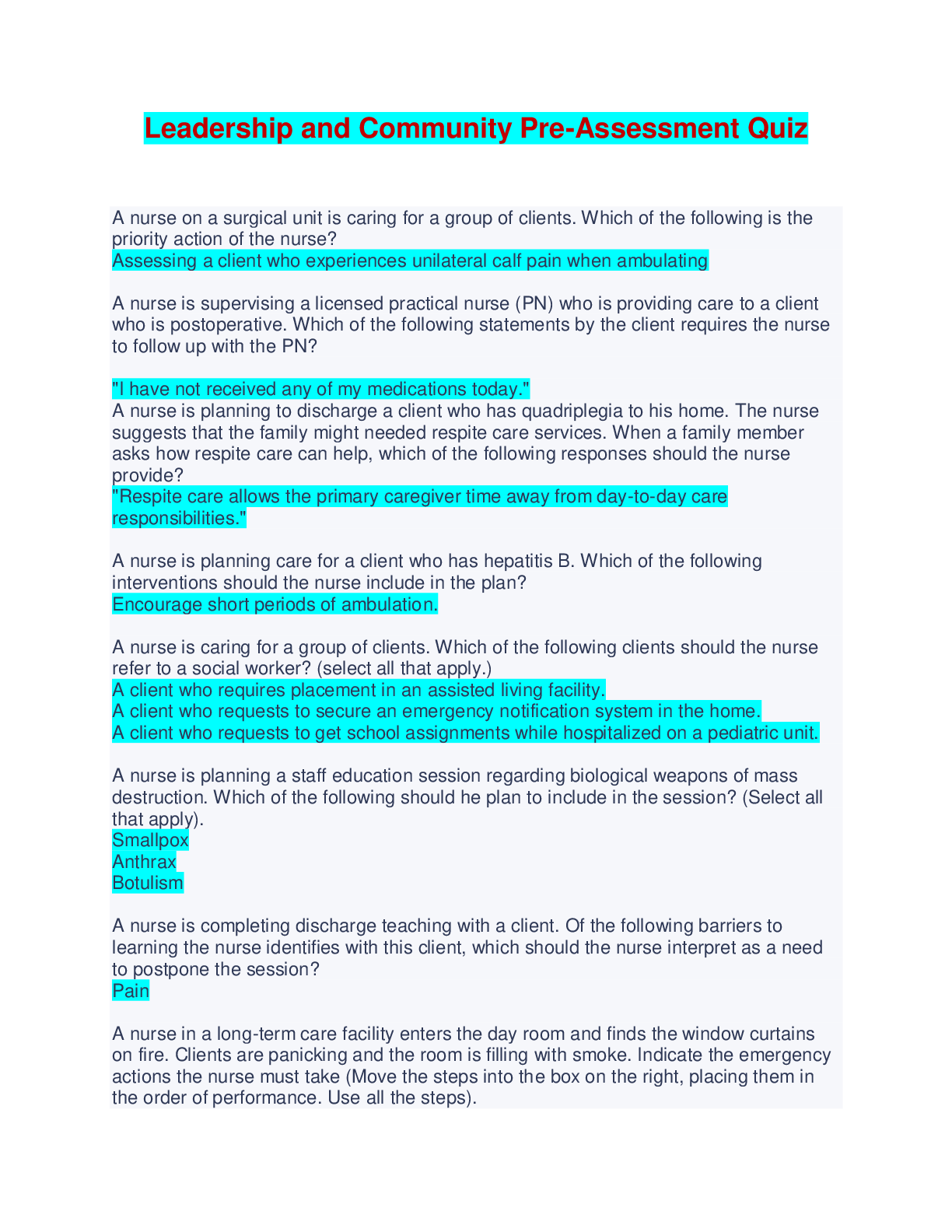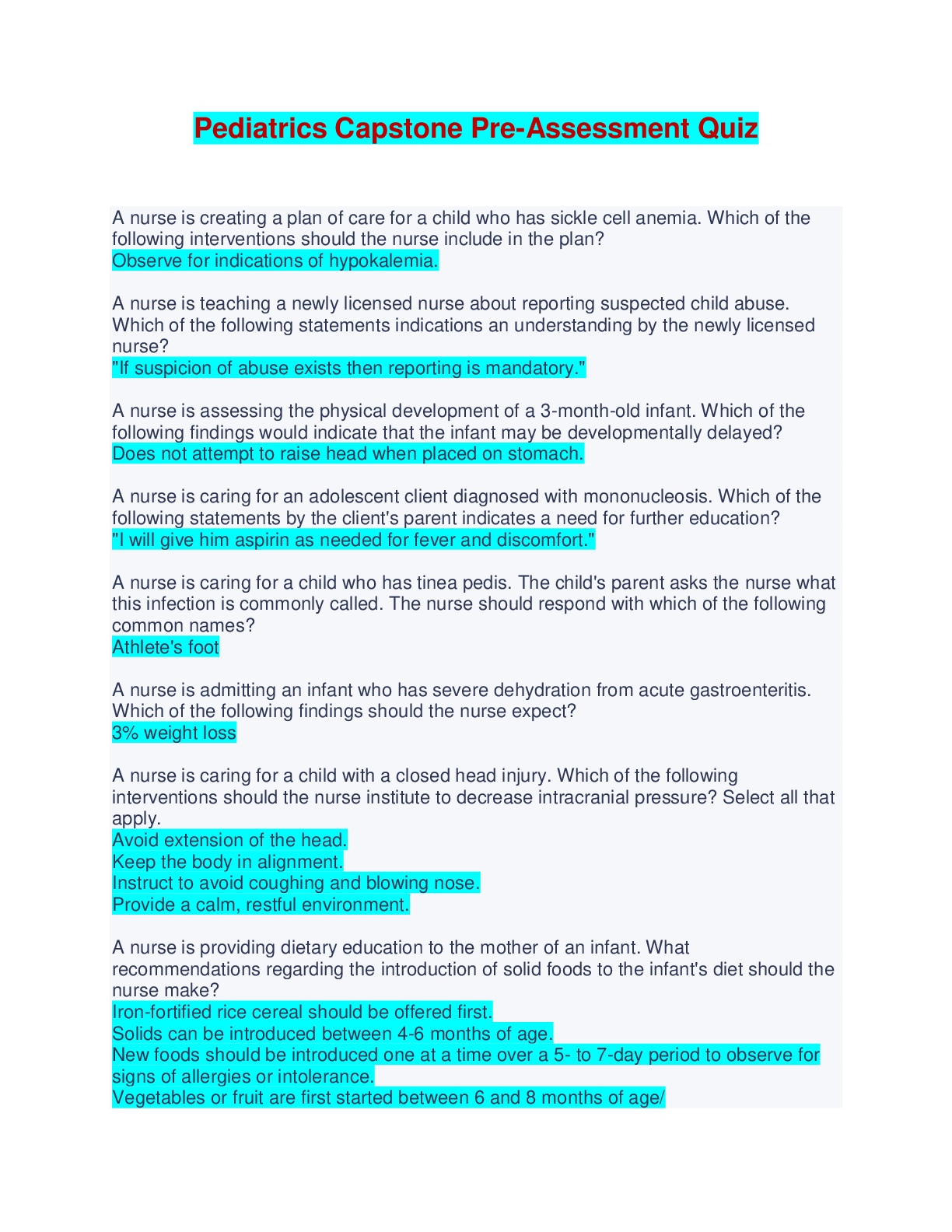2024 Fundamentals Pre-Assessment Quiz - Complete Solutions
Document Content and Description Below
2024 Fundamentals Pre-Assessment Quiz - Complete Solutions A nurse is caring for a client receiving opiates for pain management. Initially after the pain management plan was started, the client was ... sedated and sleeping most of the time. After three days on the plan the client is no longer sedated and sleeping regularly. What action should the nurse take? No action is needed at this time Opiates initially cause sedation but this effect subsides with maintenance pain control. The pain management plan is working. There is no need to change or add additional methods at this time. A nurse is caring for a client with heart failure who has evidence of dyspnea, bibasilar crackles and frothy sputum. What dietary recommendations should be provided to this client in management of their heart failure? Reduce sodium intake It is encouraged to stop smoking, reduce sodium intake, monitor fluid intake, restricting intake to 2 L per day. It is also encouraged to increase protein intake to 1.12 g/kg and consume small, frequent meals that are soft, easy-to-chew foods. There are no recommendations on calcium intake associated with heart failure. A nurse is preparing to administer 250 mg of an antibiotic IM. Available is 3 g/5ml. How many mL should the nurse administer per dose? (round to the nearest tenth.) 0.4mL A nurse is caring for several clients prescribed heat/cold therapies. Which of the following clients are at risk of injury from these therapies? (select all that apply) The nurse should use extreme caution with clients who are very young, an older adult, fair-skinned, who have impaired cognition, and have comorbidities because they are at higher risk for fragile skin. A nurse is preparing to administer total parenteral nutrition (TPN) to a client. Which of the following findings indicates a need to obtain a new bag of TPN before administering? The TPN solution has an oily appearance and a layer of fat on top of the solution Before administration of TPN, the nurse should look for "cracking" of TPN solution. This occurs if the calcium or phosphorous content is high or if poor-salt albumin is added. A "cracked" TPN solution has an oily appearance or a layer of fat on top of the solution and should not be used. A nurse is completing a nutritional assessment on a client and measures body mass index (BMI). Which of the following readings correlates with a BMI of an overweight client? 25 Overweight is defined as an increased body weight in relation to height. It is indicated by a BMI of 25 to 29.9 A nurse is caring for a client who has been prescribed furosemide. Which of the following foods should the nurse encourage this to include in his diet? Oranges Clients prescribed potassium-wasting diuretics should be encouraged to eat foods high in potassium. Oranges, dried fruits, tomatoes, avocados, dried peas, emats, broccoli, and bananas are all good sources of potassium What is the name of a legal document that instructs health care providers and family members about what, if any, life-sustaining treatment an individual wants if at some time the individual is unable to make decisions. Living will A living will is a legal document that specifically outlines a client’s wishes regarding life-sustaining treatment A nurse manager is providing staff education on the correct use of restraints. Which of the following should be included in this education? (select all that apply) 1. Restraints should not interfere with treatment 2. Restraints should not be used because of short staffing 4. Staff must document type and location of the restraint and time applied 5. Assess neurovascular and neurosensory status every 2 hours Restraints should be applied as a last resort after other measures have been used. Thorough and timely documentation needs to be completed when restraints are applied, following protocol and policy. Neurovascular and neurosensory status should be assessed every 2 hours, along with frequent check-ins to ensure the safety and comfort of the client. Restraints should not be used as a way to contain the client when a unit is short-staffed. The type or technique of restraint used must be the least restrictive intervention possible and should never interfere with treatment. A nurse should teach which of the following clients requiring crutches about how to use a three-point gait? A client who has a right femur fracture with no weight bearing on the affected leg A three-point gait is appropriate for this client. A three-point gait requires the client to bear all of his weight on one foot. With a three-point gait, the client bears weight on both crutches and then on the uninvolved leg, repeating the sequence. The affected leg does not touch the ground. Which of the following can cause a low pulse oximetry reading? [Show More]
Last updated: 1 year ago
Preview 1 out of 6 pages

Buy this document to get the full access instantly
Instant Download Access after purchase
Buy NowInstant download
We Accept:

Reviews( 0 )
$13.00
Can't find what you want? Try our AI powered Search
Document information
Connected school, study & course
About the document
Uploaded On
Jan 17, 2024
Number of pages
6
Written in
Additional information
This document has been written for:
Uploaded
Jan 17, 2024
Downloads
0
Views
58

